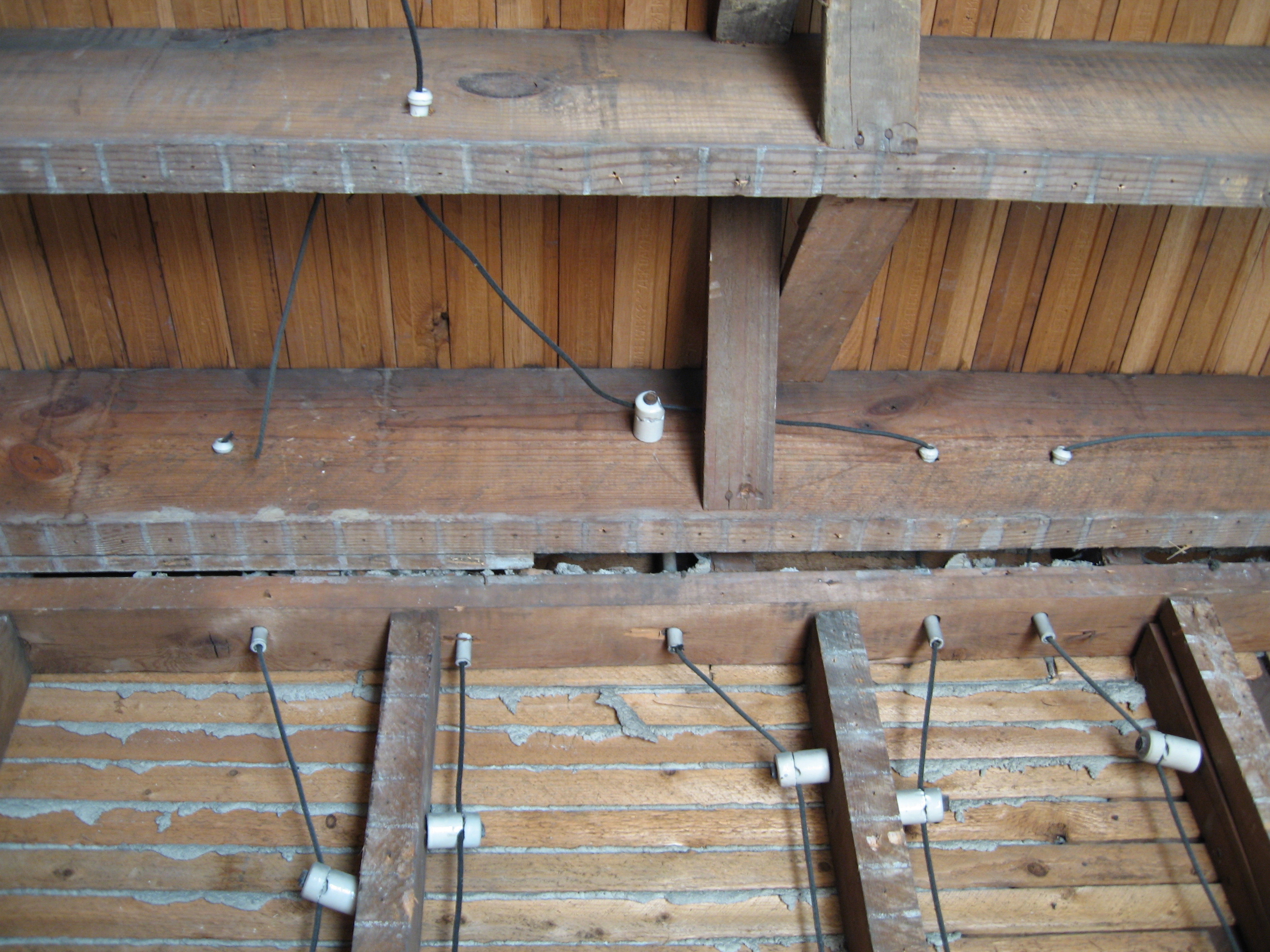Some distribution lines are insulated. It’s pretty rare and mostly on older systems.
For those who don’t know what the different power lines are, transmission lines are used to carry power from one area to another. These tend to run at scary high voltages (tens of thousands to hundreds of thousands of volts) and are not insulated. Transmission lines carry the power from the generators to the substations. From the substations, distribution lines carry the power out to the individual areas where it is used. Distribution voltages are anywhere from about 3,000 volts to maybe 12,000 or so, with older systems tending to be lower in voltage and newer systems tending to be higher. In some areas the distribution voltages can even be as high as 25,000 to 30,000 volts.
Transmission lines are always above ground. Distribution lines are usually above ground in older systems and sometimes underground in newer systems. Transformers are used to drop the voltage from the distribution line down to what your house uses (typically 240 volts off of a split phase transformer) and one transformer will typically feed 3 or 4 houses. If you have overhead distribution lines, the transformers will be the big can-like things you see hanging on the poles. If you have underground lines, the transformers are in metal boxes on the ground.
The drop cable from the transformer to your house will usually be insulated. This runs at 240 volts.
Obviously, the higher the voltage, the bigger the risk. What happens when the power line hits the ground is that there will often be a voltage gradient from the point of impact, spreading out through the ground. So the point where the wire touches the ground might be at say 12,000 volts, and a point 3 feet away might be at 6,000 volts, and a point 8 feet away might be at close to 0 volts. So even if you are standing on the ground and not touching the line, there could be a voltage potential difference of a couple of thousand volts between your feet, which is more than enough to cause you a very severe shock.
Another thing is that power lines, kinda like the wires in your house, have circuit breakers of sorts. If you draw too much current from the line, it trips out and shuts off. But there is one very important difference between the breakers in your house and the protective devices on power lines. If you blow a breaker, you just walk down to your basement and flip the switch and you’re done. To do the same thing on a power line might require a lineman to drive several miles to get to where he can flip the switch. So power lines have what are called automatic reclosers. This is a device that automatically flips the switch back on. Most power line faults are caused by things like trees blowing into power lines, so they are very temporary faults. Reclosers are programmable, but they are usually set to try a couple of times fairly quickly, and then once after a short pause, then once after a longer pause, and then they give up. So when your power goes off, you’ll often see your lights flicker a couple of times within the first couple of seconds, then once after maybe 10 or 15 seconds, then once after about 2 minutes, and after that, nothing until the power comes back on. That’s the recloser trying to restart the line. After the last attempt fails, then a lineman has to go out and find the problem with the line, and then he has to manually reset the breaker.
So if a power line falls, it might be dead as you walk up to it, but then as you stand there, maybe you hit the 2 minute mark that the recloser is programmed for, and the recloser energizes the line and you get shocked (and maybe killed).
The long and short of it is that staying away from downed power lines is smart.
Staying inside and staying away from anything electrical was a good thing to do.

